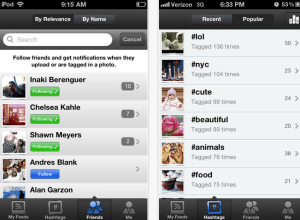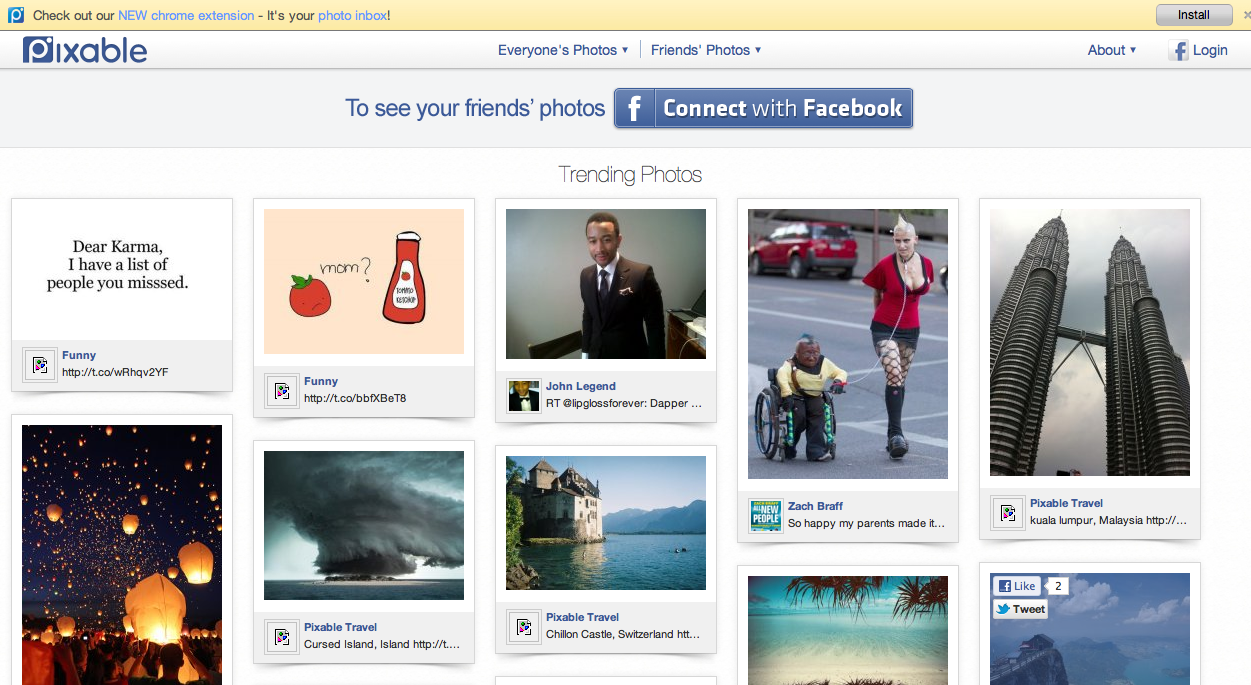Since its name began appearing on blogs and in media early last year, and launched officially at DEMO in March, Pixable has been able to sustain that buzz — no easy feat in a world saturated with photo apps. That’s because millions of photos and videos are shared on social networks every day, making it difficult to find the ones that matter amidst the noise. So, Pixable pulls that fire hose of images and videos from Facebook, Twitter, Instagram, Flickr, YouTube, and Vimeo, aggregates them in one place, and then gives users a number of sleek categorization, sorting, and editing tools to help them find the most relevant content.
This is where Pixable’s true value proposition lies: In its “WonderRank” technology, which crawls users’ networks to find out what’s interested them in the past, what relationships are valued most, using commonalities in background information (like school, work history, etc.), to serve the best content. Its machine learning and algorithmic mix takes over 70 signals into account, getting smarter the more you use the app, organizing photos and videos into a number of fields, like most popular of the day, week, month, showing which users changed profile pics, what photos and videos are most recent, etc.
As Pixable has continued to expand its functionality (check out our posts here), users have responded. Pixable CEO and Co-founder Inaki Berenguer tells us that people are currently viewing 2,000 photos across its iOS (and Facebook) apps per minute, with over 100 million views on average per month.
The app has seen over 1.5 million downloads since April of last year, but what’s interesting is that most of those downloads have come recently. After launching in April, Pixable saw about 1,000 downloads per month, reaching 3,355 downloads by the end of August and jumping to 137,000 by the end of October, and 790K on December 1st. By the beginning of February, the apps were nearing 1.5 million downloads. So, while it technically took nine months to reach 1m downloads, its growth has hockey-sticked in the last four months. (Part of this the team attributes to Apple’s featuring Pixable on the App Store.)
Of course downloads are one thing, but active, engaged users are the important metric. The team tells us that over 60 percent of the app’s total installs were active in January. Not too shabby. As our lives become increasingly saturated by photo and video sharing, people yearn for better ways to filter the noise — not just on a single platform, but from all of the sources of photo and video content we use daily.
In this way, the team hopes that its categorization and filtering features can increase the stickiness of its user experience. To do that, and press past being a “priority inbox” for photos on social platforms, Pixable is today launching a feature that will allow users to group images on its platform using hashtags — a la Twitter.
 Users can tag their own (and their friends’) photos with terms like #awesomeness, #graduation, #ripcrunch, etc. The goal is to take photo-tagging beyond its focus on people, and extend that group categorization to the rest of the nouns, i.e. places and things, to improve discovery and recommendations of photo content. (This sounds like a similar approach to that of Tracks, another cool photo sharing tool we’ve covered.)
Users can tag their own (and their friends’) photos with terms like #awesomeness, #graduation, #ripcrunch, etc. The goal is to take photo-tagging beyond its focus on people, and extend that group categorization to the rest of the nouns, i.e. places and things, to improve discovery and recommendations of photo content. (This sounds like a similar approach to that of Tracks, another cool photo sharing tool we’ve covered.)
Like Twitter, Pixable will group together photos hashtagged based on shared keywords and highlight popular trending hashtags so users can search based on topic/keyword. In the photo mess, it’s a great way to enable easy recall of photos based around events, like TC Disrupt, or your cat’s birthday party.
It’s a smart move, applying those successful Twitter mechanics that have worked for social networks and photo sharing sites alike — Instagram has been hashtagging for over a year now. But obviously, this brings that feature to images from all your networks, hashtaggregating, if you will. Initially, hashtagging will only be available on Pixable’s iPhone app, but it plans to integrate this feature across platforms in the next few months.
The NYC-based startup has raised just over $6.1 million to date. For more, check ’em out at home here.

